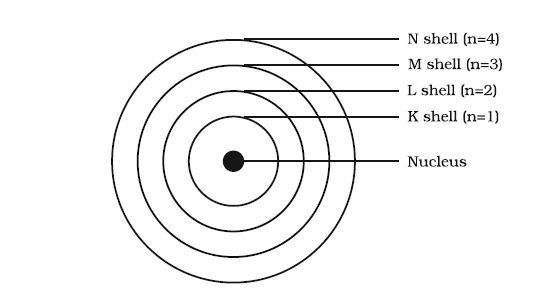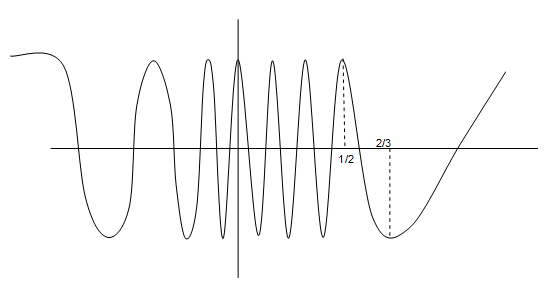12th Grade > Mathematics
APPLICATION OF DERIVATIVES MCQs
Total Questions : 58
| Page 6 of 6 pages
Answer: Option A. -> Atleast one root
:
A
Let f(x)=anXn+an−1Xn−1+...+a2x2+a1x+a0
Which is a polynomial function in x of degree n. Hence f(x) is continuos and differentiable for all x.
Let ∞<β . We given, f (∞)=0=f(β).
By Rolle's theorem, f' (c) = 0 for some value c,
∞<c<β.
Hence the equation
F′(x)=nanxn−1+(n−1)an−1xn−2+...+a1=0
has atleast one root between ∞andβ.
Hence (c) is the correct answer.
:
A
Let f(x)=anXn+an−1Xn−1+...+a2x2+a1x+a0
Which is a polynomial function in x of degree n. Hence f(x) is continuos and differentiable for all x.
Let ∞<β . We given, f (∞)=0=f(β).
By Rolle's theorem, f' (c) = 0 for some value c,
∞<c<β.
Hence the equation
F′(x)=nanxn−1+(n−1)an−1xn−2+...+a1=0
has atleast one root between ∞andβ.
Hence (c) is the correct answer.
Answer: Option A. -> 5.0267
:
A
Let y = x1/3,x=125 and x+Δx=127. Then,
dydx=13x2/3andΔx=0
When, x = 125, we have
y=5anddydx=175
∴y=dydxΔx⇒Δy175×2=275
∴(127)1/3=y+Δy=5+275=5+83×1100
⇒(127)1/3=5+(2.6667)100=5.02667=5.0267
Hence (a) is the correct answer.
:
A
Let y = x1/3,x=125 and x+Δx=127. Then,
dydx=13x2/3andΔx=0
When, x = 125, we have
y=5anddydx=175
∴y=dydxΔx⇒Δy175×2=275
∴(127)1/3=y+Δy=5+275=5+83×1100
⇒(127)1/3=5+(2.6667)100=5.02667=5.0267
Hence (a) is the correct answer.
Answer: Option C. -> 43
:
C
Let OC be the wall. Let AB be the position of the ladder at any time t such that OA =x and OB=y. Length of the ladder AB =20 ft.
In ΔAOB,

x2+y2=(20)2
⇒2xdxdt+2ydydt=0∴dydt=−xydxdt=−x√400−x2.dxdt=−16√400−(16)2.dxdt=−43dxdt
-ve sign indicates, that when X increases with time, y decreases. Hence, the upper end is moving 43 times as fast as the lower end.
:
C
Let OC be the wall. Let AB be the position of the ladder at any time t such that OA =x and OB=y. Length of the ladder AB =20 ft.
In ΔAOB,

x2+y2=(20)2
⇒2xdxdt+2ydydt=0∴dydt=−xydxdt=−x√400−x2.dxdt=−16√400−(16)2.dxdt=−43dxdt
-ve sign indicates, that when X increases with time, y decreases. Hence, the upper end is moving 43 times as fast as the lower end.
Answer: Option B. -> f(x1 + x22)
:
B
Let A = (x1,f(x1)) and B = (x2,f(x2)) be any two points on the graph of y = f(x).
Since f"(x) > 0, in the graph of the function tangent will always lie below the curve. Hence chord AB will lie completely above the graph of y = f(x).
Hence f(x1)+f(x2)2>f(x1+x22)
:
B
Let A = (x1,f(x1)) and B = (x2,f(x2)) be any two points on the graph of y = f(x).
Since f"(x) > 0, in the graph of the function tangent will always lie below the curve. Hence chord AB will lie completely above the graph of y = f(x).
Hence f(x1)+f(x2)2>f(x1+x22)




















